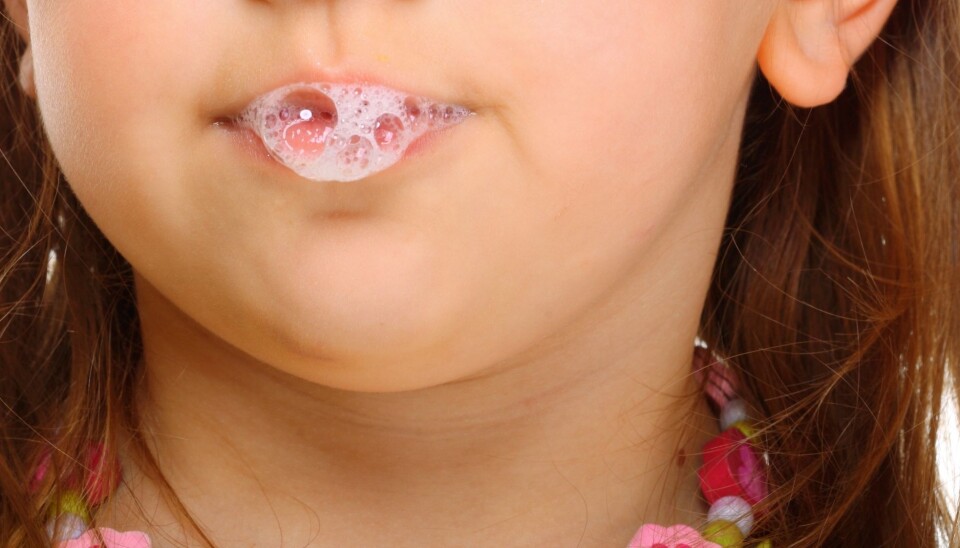This article is produced and financed by the Norwegian University of Life Sciences (NMBU) - read more

Scientists finally know how we make saliva
Researchers have discovered how saliva, which is very important for our digestion and health, is made. They predict that in the future, a saliva test may become as common as a blood test when you see your doctor.
Saliva plays a key role in our oral cavity. It is a fluid with a complex composition that consists of mucus, water, proteins, enzymes and several other substances, each of which has its own function.
Saliva makes it easier to taste, swallow and digest food, it protects our teeth and it kills some bacteria we would rather not have in our bodies.
But how does the body make saliva?
To investigate this, the researchers decided to map the saliva and all the genes in the saliva of 25 people.

"We found how human saliva is made by the corporation of three types of salivary glands", says postdoctoral fellow Marie Saitou at the Department of Animal and Aquaculture Sciences at Norwegian University of Life Sciences (NMBU).
She is the lead author of a report recently published in Cell Report together with other researchers at University at Buffalo and University of California, San Francisco
The salivary glands have different functions
Saitou talks about the three major salivary glands: the parotid gland, the submandibular gland and the sublingual salivary gland. We have a pair each of these, and it is they that produce most of our saliva.
What we did not know was which genes are active in which salivary glands. We also did not know which cell types produce the various constituents in saliva and in which glands they are produced.
The genes found in saliva provide the recipe for how each gland should produce its share of saliva. By mapping all the genes in the three glands, it turned out that each gland makes different parts of the saliva. It is thus not the case that all the salivary glands produce the same fluid. Many a little makes the mickle that is our saliva.
For example, the researchers found that the sublingual salivary gland produces almost none of the enzyme needed to digest starch. The other two glands take care of that. The sublingual salivary gland, on the other hand, produces most of a type of mucus that protects us from infections. The parotid gland does not contribute anything to this.
Saliva can be used to identify disease
Our saliva turns out to be quite similar from person to person, at least among healthy people. It is useful to have such a "standard" that says how your saliva should preferably be. It makes it possible to use saliva to find out if something is wrong.
"Now that we know how healthy salivary glands produce saliva, we could use saliva in health scans to identify molecular markers of signs of diseases in the future", says Marie Saitou.
In the future, a saliva test may become as common as a blood test when you see your doctor. When there is a saliva sample that differs from the "healthy saliva standard", it may indicate that something is wrong or that you are in the process of developing a disease. This can be used, for example, to find diseases of the oral cavity, various types of cancer and some auto immune diseases.
Fetuses also makes saliva
The researchers also examined whether there are any differences between fetuses and adults.
The salivary glands are developed quite early in pregnancy, long before for the infant needs to taste and eat and digest something. The researchers examined the development in the fetuses at 22 - 23 weeks.
"We found that hundreds of genes are actively working in baby salivary glands before they start eating", says Marie Saitou.
This suggests that saliva has other important functions for fetuses and infants, related to growth and development, which is yet to be discovered.
At this stage in pregnancy, all the different salivary glands make the same saliva.
"We found that the three types of salivary glands are functionally differentiated in adults but have yet to be differentiated in babies though they are anatomically separated", says Marie Saitou.
There is a development where our salivary glands go from working quite similarly to having their own special areas.
Can be used in animal research
Saitou will now work further with this knowledge to investigate how this works in livestock and fish, as a member of the CIGENE Research group at NMBU.
"For example, I will look at how dietary change associated with domestication has driven the evolution of salivary glands in domestic animal or the biological mechanism of other types of bodily fluids such as mammary glands which produce milk", says Saitou.


































